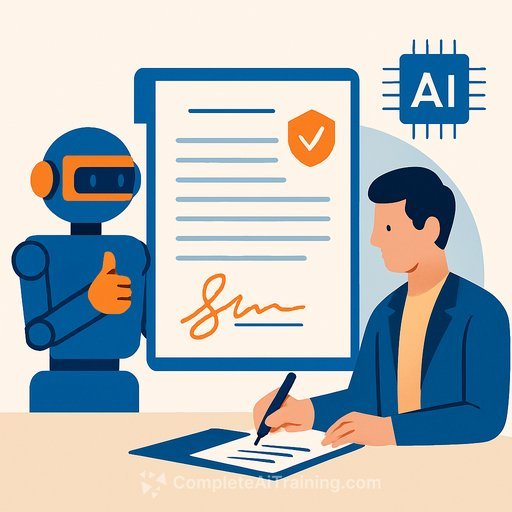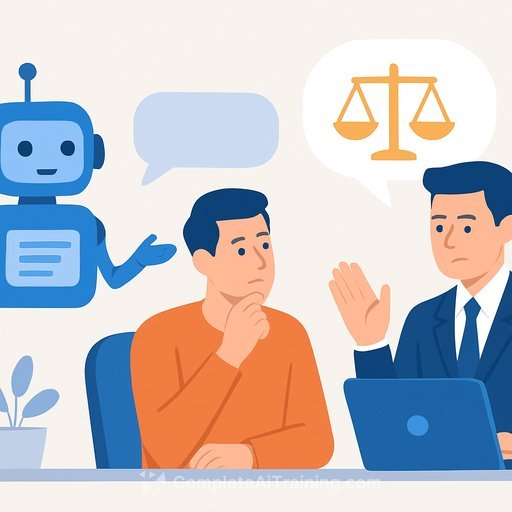Why your legal AI needs more than the open web: inside CoCounsel's guardrails
Generative AI can be useful, but legal work has a zero-tolerance policy for guesswork. Hallucinated citations, mixed-up precedents, and blog opinions masquerading as authority can expose you and your client. The fix isn't a bigger model. It's better inputs, clearer workflows, and strict safeguards.
The core problem: the open web is noisy
Most general-purpose models are fed the public internet. That invites three issues that matter in court and at the deal table:
- Authority is mixed with opinion. Case law sits next to blog posts and forum threads. An LLM can't reliably tell which is binding, persuasive, or irrelevant without curated signals.
- Structure is inconsistent. Majority, concurrence, and dissent aren't always labeled the same way, leading to misread holdings and confused standards.
- No dependable citator. There's no universal way to see if a case is overturned, criticized, or limited in subsequent history on the open web. That's how bad law slips in with confidence. See an overview of citators here: citator.
The issue isn't the model's syntax. It's the data's signal-to-noise ratio.
The CoCounsel difference: grounded in trusted legal content
CoCounsel takes a different path: start with vetted law. Its responses are grounded in the continuously updated bodies of Westlaw and Practical Law. That foundation changes the quality of the output and the risk profile of your work.
- Authoritative. Answers and excerpts come from curated primary and secondary sources.
- Transparent. Citations are surfaced, so you can check the reasoning "chain" yourself.
- Lower hallucination risk. Cleaner inputs reduce speculative text and phantom cites.
Agentic workflows that mirror how lawyers actually work
CoCounsel doesn't just autocomplete paragraphs. It executes multi-step tasks the way a careful associate would, with procedure over guesswork.
- Legal research. It drafts a research plan, queries targeted sources, checks citation history, consults secondary materials, and weighs authorities by jurisdiction and treatment.
- Legal drafting. It follows checklists, treatises, and practice notes to assemble arguments and documents that track accepted standards-rather than winging it from a one-line prompt.
That's why it asks for facts, client documents, and governing law up front. Clarity in equals clarity out.
Guardrails you can point to
Reliability isn't a marketing line; it's enforced with testing and scope limits.
- LLM-as-judge evaluations. The team builds law school-style prompts with ideal answers, then uses AI graders to score outputs against expert standards.
- Attorney review before release. Practicing lawyers manually review outputs and edge cases before any new skill is shipped.
- Nightly regression testing. Each skill runs through thousands of tests every night. New foundation models are benchmarked for legal tasks before adoption.
- Strict scope control. CoCounsel is limited to tasks it has been trained and tested to perform. No hidden "freestyle" modes.
Why this matters for your practice
- Fewer dead ends. Less time chasing phantom cases and cleaning up "creative" summaries.
- Traceable work product. Every key statement ties back to a citable source.
- Domain-specific accuracy. Research reflects jurisdiction, treatment, and procedural posture.
- Predictable behavior. Guardrails create consistency across matters and teams.
What's next: reliable complaint drafting
Upcoming skills follow the same pattern: research first, drafting second. Before proposing a complaint, CoCounsel will evaluate potential claims in Westlaw, check pleading standards for the relevant court, and build a structure that respects both substance and procedure. For context on federal pleading basics, see FRCP Rule 8 at Cornell LII: Rule 8.
It's a measured path by design. The goal is trust you can defend-to clients, partners, and the court.
Practical checklist to evaluate any legal AI
- Source of truth: Does it rely on vetted legal databases, or a generic crawl?
- Citations on every claim: Can you click through to the primary source?
- Citator awareness: Does it check treatment and subsequent history?
- Agentic process: Does it plan, verify, and iterate like a lawyer-not just summarize?
- Testing discipline: Are there documented benchmarks, attorney reviews, and nightly regressions?
- Scope limits: Will it refuse tasks outside its trained skills?
Bottom line
General-purpose AI is fine for notes and drafts you'd never file. For anything client-facing, you need authoritative sources, methodical workflows, and guardrails that keep the model in bounds. That's the CoCounsel approach-reliability first, features second.
Want to upskill your team on practical AI workflows for legal work? Explore curated programs by job here: AI courses by job.
Your membership also unlocks:






